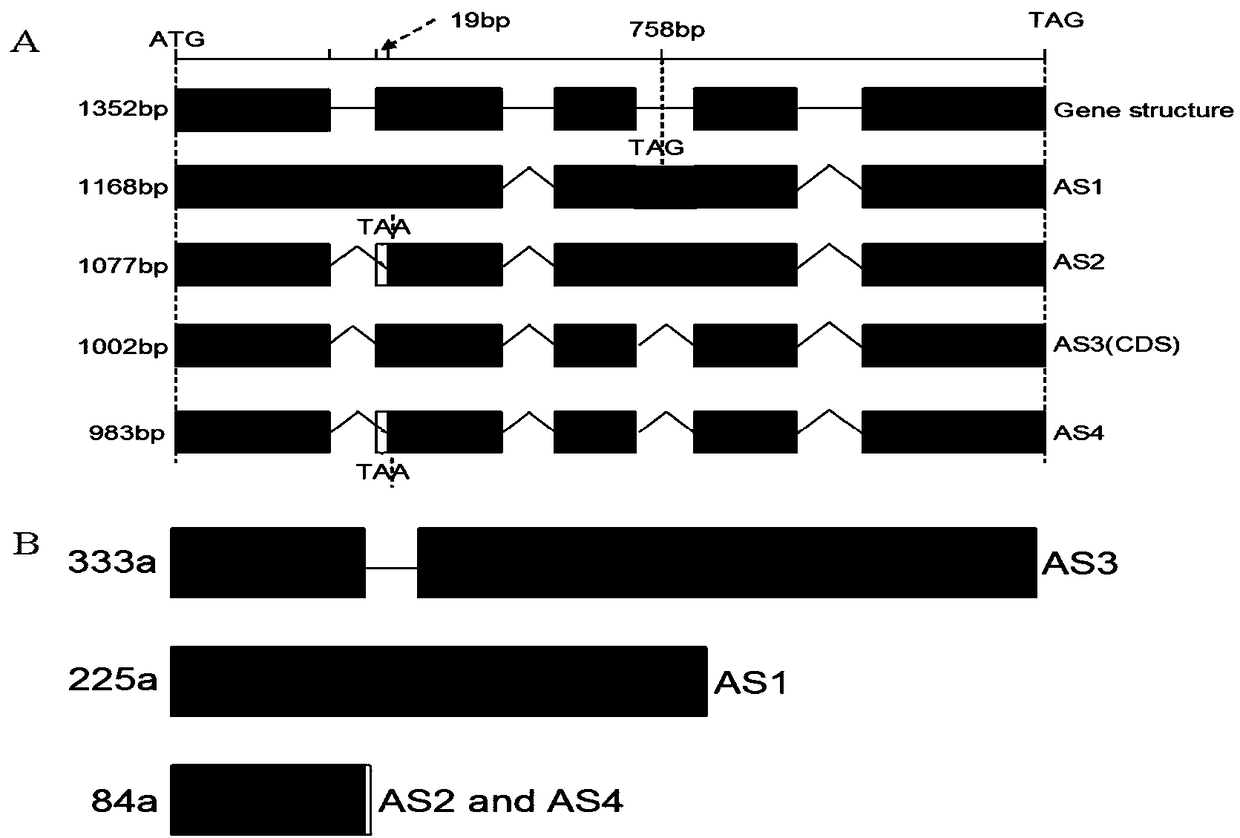Application of arabidopsis thaliana MAPKKK kinase in breeding
A technology of Arabidopsis thaliana and kinase, which is applied in the application field of Arabidopsis MAPKKK kinase in breeding, can solve the problems that the influence needs to be further studied, and achieve the effect of saving time and accurate seed selection
- Summary
- Abstract
- Description
- Claims
- Application Information
AI Technical Summary
Problems solved by technology
Method used
Image
Examples
Embodiment 1
[0021] This embodiment 1 provides a kind of application of Arabidopsis thaliana MAPKKK kinase in breeding; wherein, Arabidopsis thaliana 47 gene is MAPKKK kinase, and its two alternative splicing forms have two phenotypes of drought resistance and early flowering respectively; There are four spliced forms of 47 genes (such as figure 1 shown), named AS1, AS2, AS3 and AS4; the nucleotide sequence of AS1 is SEQ ID NO.1, the nucleotide sequence of AS2 is SEQ ID NO.2, and the nucleotide sequence of AS3 is SEQ ID NO .3, the nucleotide sequence of AS4 is SEQ ID NO.4; the amino acid sequence of the protein encoded by AS1 is SEQ ID NO.5, the amino acid sequence of the protein encoded by AS2 and AS4 is SEQ ID NO.6, the amino acid sequence of the protein encoded by AS3 The sequence is SEQ ID NO.6, and its three proteins are located in the nucleus and cytoplasm through GFP; the drought resistance phenotype experiment shows as follows: image 3 As shown, the 47-gene full deletion mutant...
PUM
 Login to View More
Login to View More Abstract
Description
Claims
Application Information
 Login to View More
Login to View More - R&D
- Intellectual Property
- Life Sciences
- Materials
- Tech Scout
- Unparalleled Data Quality
- Higher Quality Content
- 60% Fewer Hallucinations
Browse by: Latest US Patents, China's latest patents, Technical Efficacy Thesaurus, Application Domain, Technology Topic, Popular Technical Reports.
© 2025 PatSnap. All rights reserved.Legal|Privacy policy|Modern Slavery Act Transparency Statement|Sitemap|About US| Contact US: help@patsnap.com



